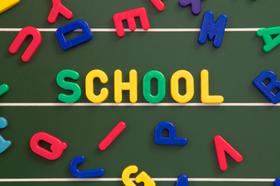Serving 567 students in grades Prekindergarten-5, Jenkins County Elementary School ranks in the bottom 50% of all schools in Georgia for overall test scores (math proficiency is bottom 50%, and reading proficiency is bottom 50%).
The percentage of students achieving proficiency in math was 33% (which was lower than the Georgia state average of 39%). The percentage of students achieving proficiency in reading/language arts was 28% (which was lower than the Georgia state average of 40%).
The student:teacher ratio of 12:1 was lower than the Georgia state level of 14:1.
Minority enrollment was 62% of the student body (majority Black), which was lower than the Georgia state average of 65% (majority Black).
Top Rankings
Jenkins County Elementary School ranks among the top 20% of public schools in Georgia for:
Category
Attribute
Student Attention
School Overview
Grades Offered
Grades Prekindergarten-5
(No virtual instruction)
(No virtual instruction)
Total Students
567 students
Gender %
Total Classroom Teachers
47 teachers
School Rankings
Overall Testing Rank
#1298 out of 2192 schools
(Bottom 50%)
(Bottom 50%)
Math Test Scores (% Proficient)
33%
39%
Reading/Language Arts Test Scores (% Proficient)
28%
40%
Science Test Scores (% Proficient)
25-29%
40%
Student : Teacher Ratio
12:1
14:1
American Indian
n/a
n/a
Asian
n/a
5%
Hispanic
9%
19%
Black
47%
36%
White
38%
35%
Hawaiian
n/a
n/a
Two or more races
6%
5%
All Ethnic Groups
Participates in the National School Lunch Program (NSLP)
Yes
Eligible for Free Lunch
100%
59%
Eligible for Reduced Lunch (12-13)
11%
7%
School Statewide Testing
School District Name
Source: National Center for Education Statistics (NCES), GA Dept. of Education
Profile last updated: 02/09/2025
Frequently Asked Questions
What is Jenkins County Elementary School's ranking?
Jenkins County Elementary School is ranked #1298 out of 2,192 schools, which ranks it among the bottom 50% of public schools in Georgia.
What percent of students have achieved state testing proficiency in math and reading?
33% of students have achieved math proficiency (compared to the 39% GA state average), while 28% of students have achieved reading proficiency (compared to the 40% GA state average).
How many students attend Jenkins County Elementary School?
567 students attend Jenkins County Elementary School.
What is the racial composition of the student body?
47% of Jenkins County Elementary School students are Black, 38% of students are White, 9% of students are Hispanic, and 6% of students are Two or more races.
What is the student:teacher ratio of Jenkins County Elementary School?
Jenkins County Elementary School has a student ration of 12:1, which is lower than the Georgia state average of 14:1.
What grades does Jenkins County Elementary School offer ?
Jenkins County Elementary School offers enrollment in grades Prekindergarten-5 (No virtual instruction).
What school district is Jenkins County Elementary School part of?
Jenkins County Elementary School is part of Jenkins County School District.
School Calendar
View the Jenkins County Elementary School below. Note key dates such as:
Event
Date
Fall Break
October 06, 2025 (Monday)
Spring Break
April 06, 2026 (Monday)
Early Release/Last Day of School
May 29, 2026 (Friday)
Recent Articles

Opinion: Handcuffing in Public Schools is a Gateway to More Violence
Some districts are banning handcuffing, while others are cuffing kindergarteners simply throwing a temper tantrum. Read this editorial to see why this author believes slapping the cuffs on children鈥檚 wrists only leads to more behavior issues and violence in their adult lives.

Whooping Cough: Should Vaccinations be Required for Public School Enrollment?
Whopping cough is making a comeback, especially amongst children, prompting health officials to encourage pertussis vaccines and boosters. However, should the pertussis vaccine be required for public school enrollment? Learn about current proposed laws and its ramifications.

What are Common Core Standards and Why Do We Need Them?
With schools nationwide adopting common core standards, we鈥檒l take a look at what they are, their benefits, and how they will change the face of public education.





